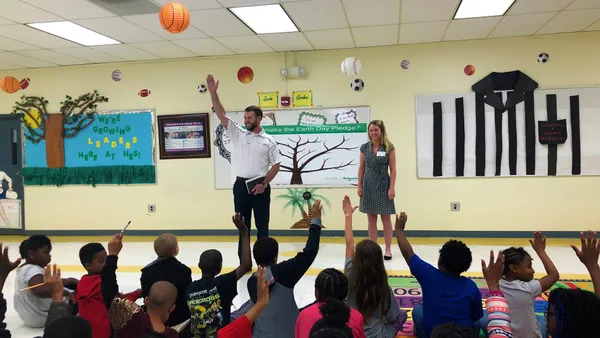Dive Brief:
-
Competency-based education (CBE) is getting more traction as a new way for educators to revolutionize learning, but some say the phenomenon is just an old policy with a different name, Peter Greene — a longtime educator who focuses on the effects of education reforms — writes for Forbes.
-
CBE resembles outcome-based education (OBE), a policy debated in the '90s that focuses on using student performance to determine outcomes — but rather than setting a fixed time period and asking students to learn what they can, OBE centered around basing time in school on a fixed amount of learning.
-
That framework didn’t last due to a lack of clear objectives specified, no evidence to support its success, and stakeholders including parents not being sold on the idea, but Greene writes that CBE is in some ways better because each state has clear objectives through college-and-career-ready standards or Common Core, and tech helps to collect and manage student data — though it still lacks proof that it works.
Dive Insight:
Competency-based education, which goes hand in hand with personalized learning, has recently been introduced as a new concept, but it has many traces to previous frameworks and policy proposals. The root of the idea comes from a central — and by no means new — push to define student preparedness by mastery of material rather than time spent in a classroom.
And this isn't the first time someone has said the framework is based on an older model, either: Rose Colby, a competency-based learning and assessment specialist and author, called CBE a resurfacing of a policy that was ultimately overshadowed by No Child Left Behind.
The revival of CBE also came with proposals to abandon letter grades in favor of tracking students' grasp of different tasks and additionally focusing on nonacademic skills like empathy and communication. Why the revival of this type of perspective? Educators and school communities nationwide are increasingly noticing that students aren't benefiting from a rigid, one-size-fits-all approach. Instead, the idea is that catering to students' needs and preferences, shaping the classroom around the way they learn, and encouraging flexibility in the process are what's needed for success. And in some areas, it's working.
CBE has also shown itself at the higher ed level, proving popular among older, nontraditional students. Emphasizing mastery of skills and concepts can better prepare students for careers and the real world than any test will. K-12 has seen this trend, and some states and schools have tried to follow suit: As of last year, at least five states had considered bills that would strengthen CBE in their state, and two bills had already been passed.
However, like the many parents who were outraged about OBE in the '90s, critics of today's CBE say shooting for competency in education sets too low of a bar on students' learning, and with an increase in blended learning and ed tech to make personalized learning more feasible, subjects that don't mesh well with technology — namely, the humanities — will get crowded out. They also say this push toward non-academic qualities strays too far from academic knowledge, leaving students less prepared and less informed on things they still need to know to be successful in the real world. Greene's critique suggested that it supports “the notion that education is just learning to perform a series of designated tasks, like a team on the Amazing Race.”
On a policy level, they claim such efforts will overburden teachers and face difficulty in statewide implementation. At the end of the day, this type of learning isn't right for everyone, and administrators are tasked with determining if it fits their school and the students they serve. But if CBE is truly the way to go, they must make sure teachers are properly equipped to handle this more active learning model.







 Dive Awards
Dive Awards




